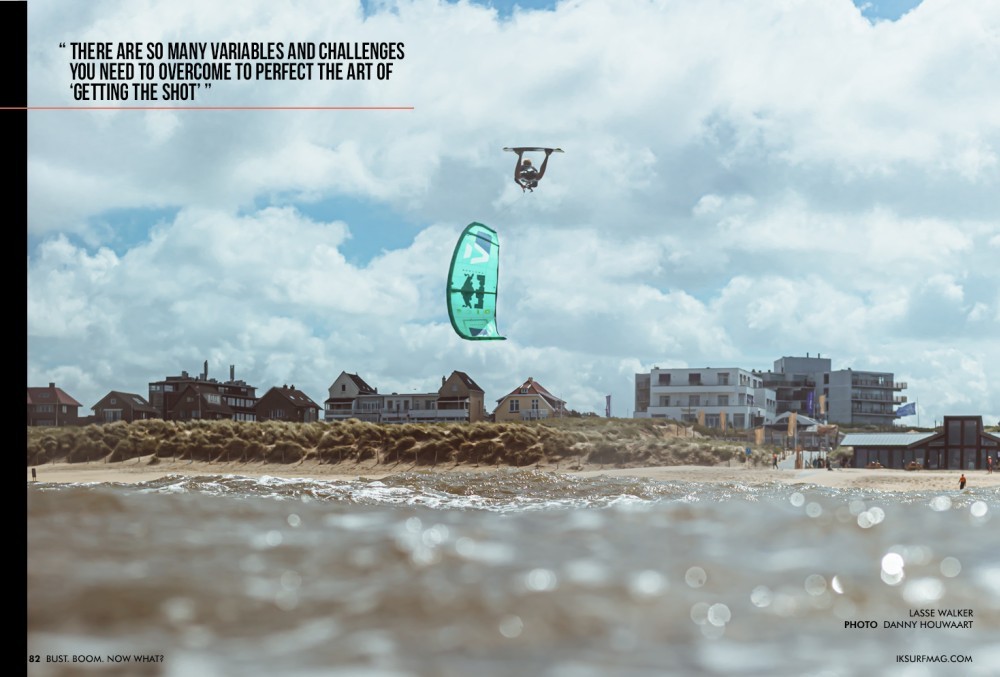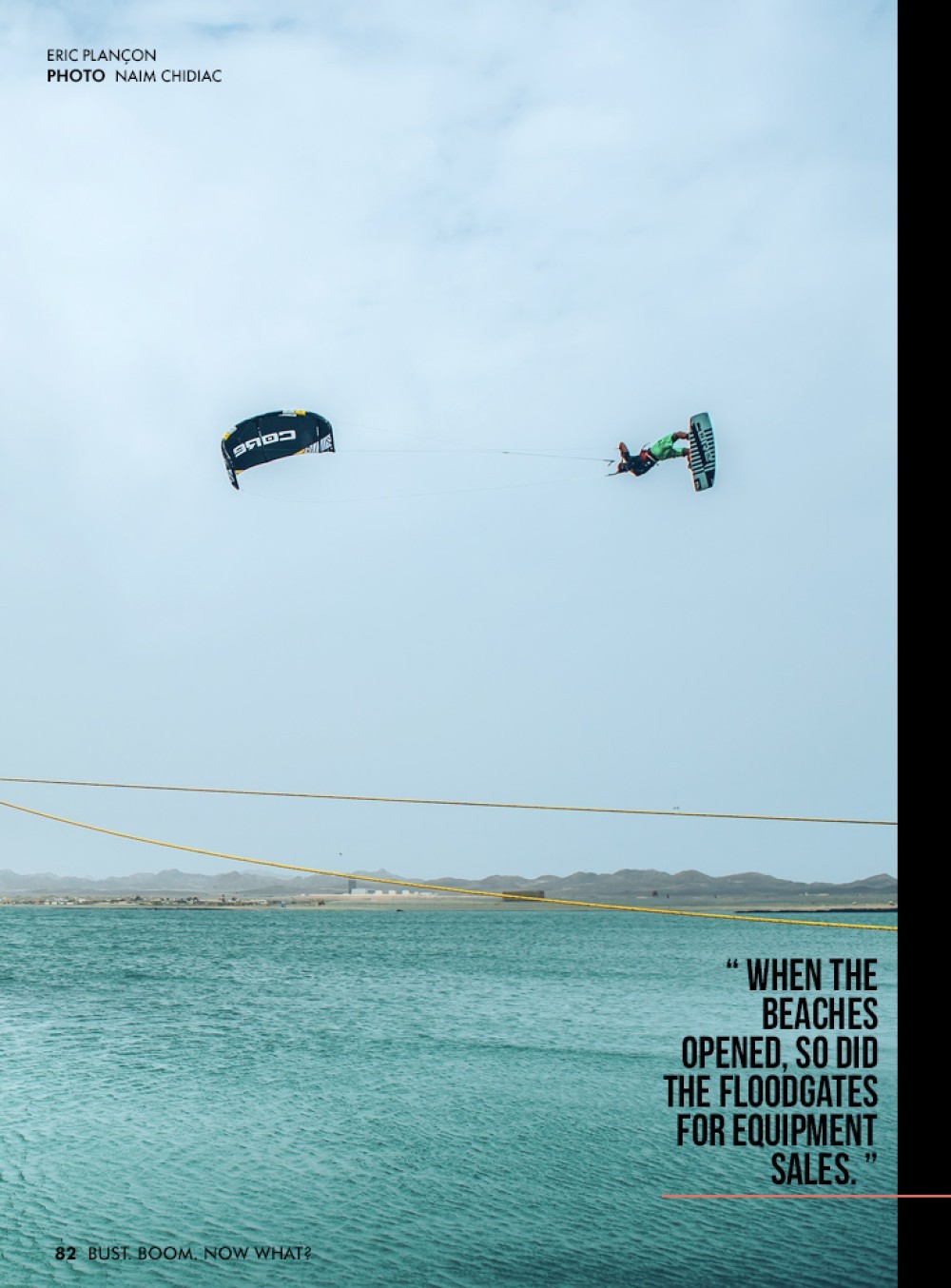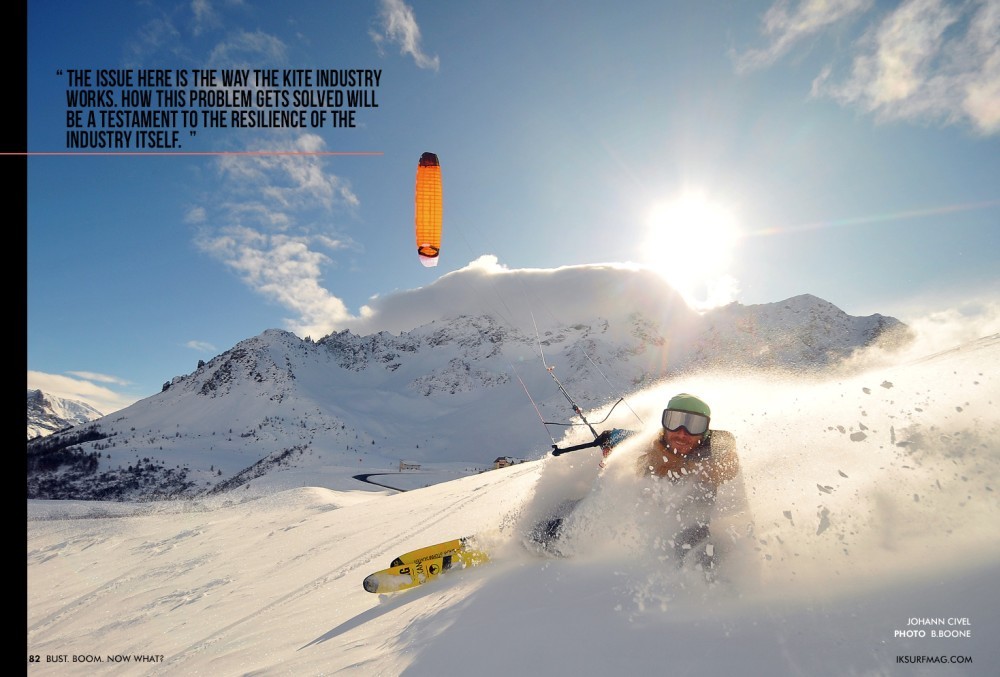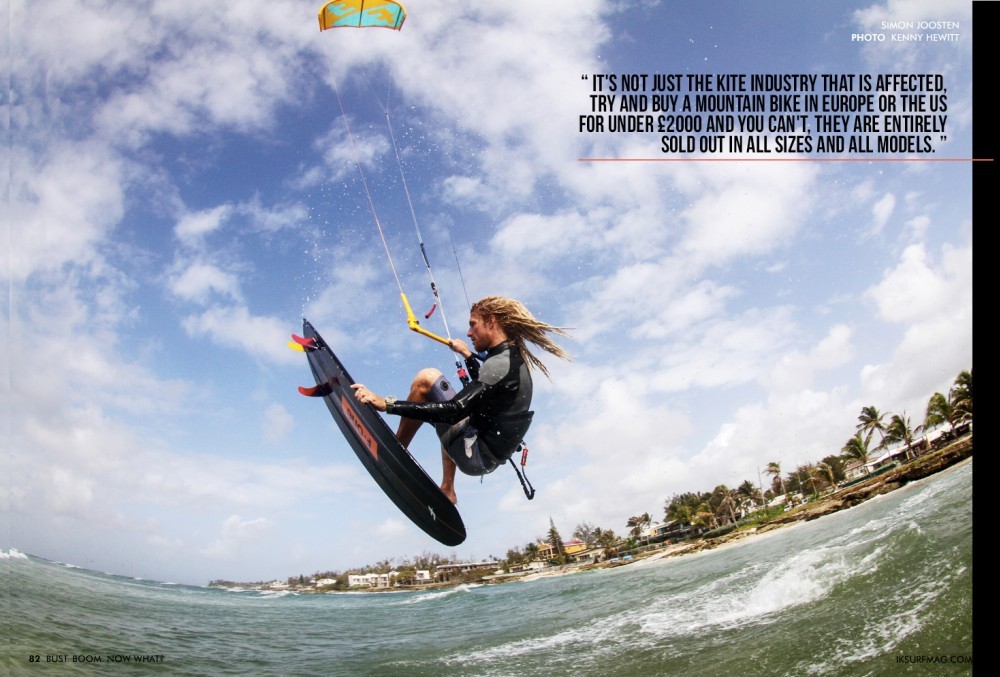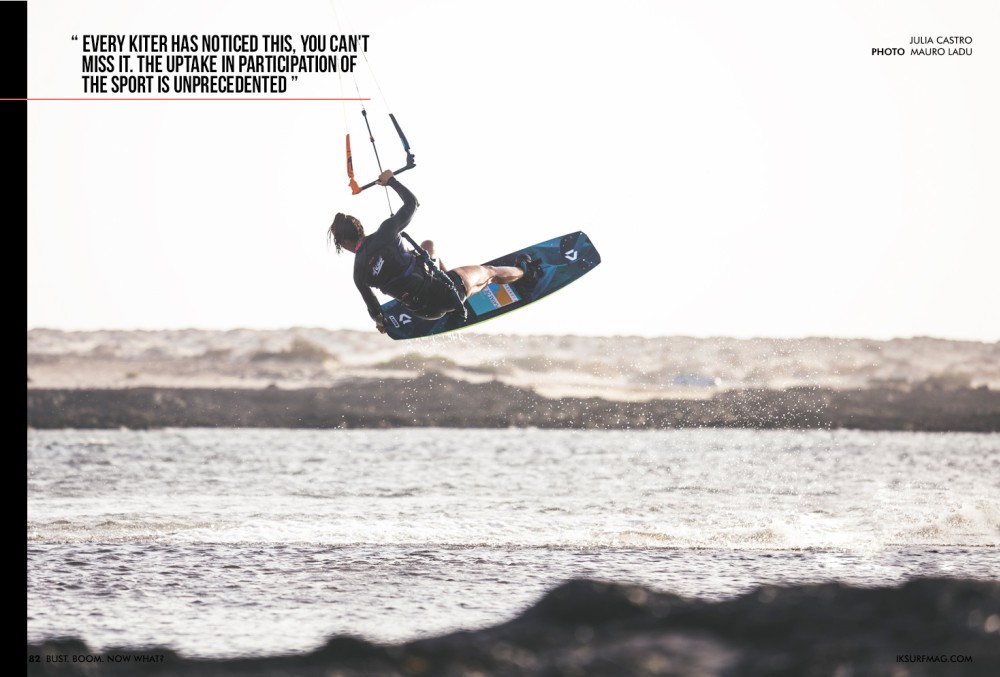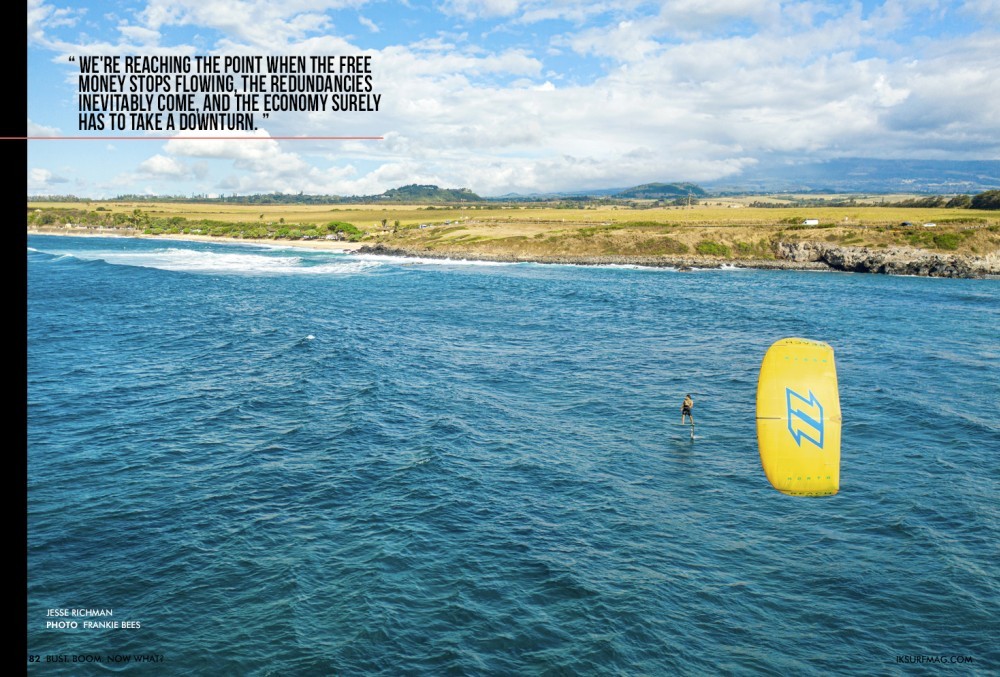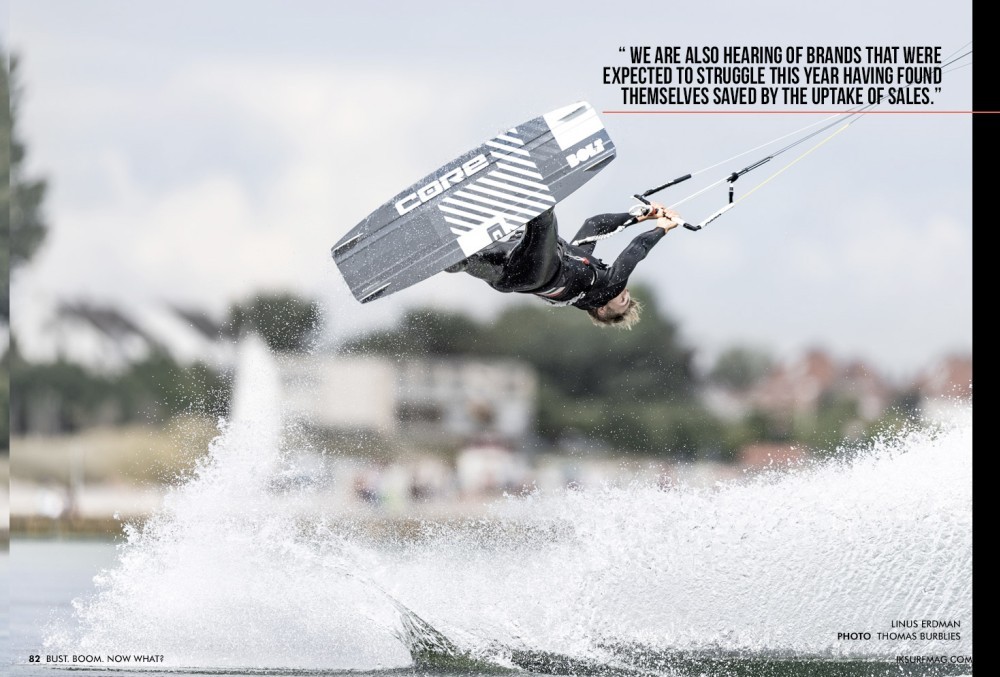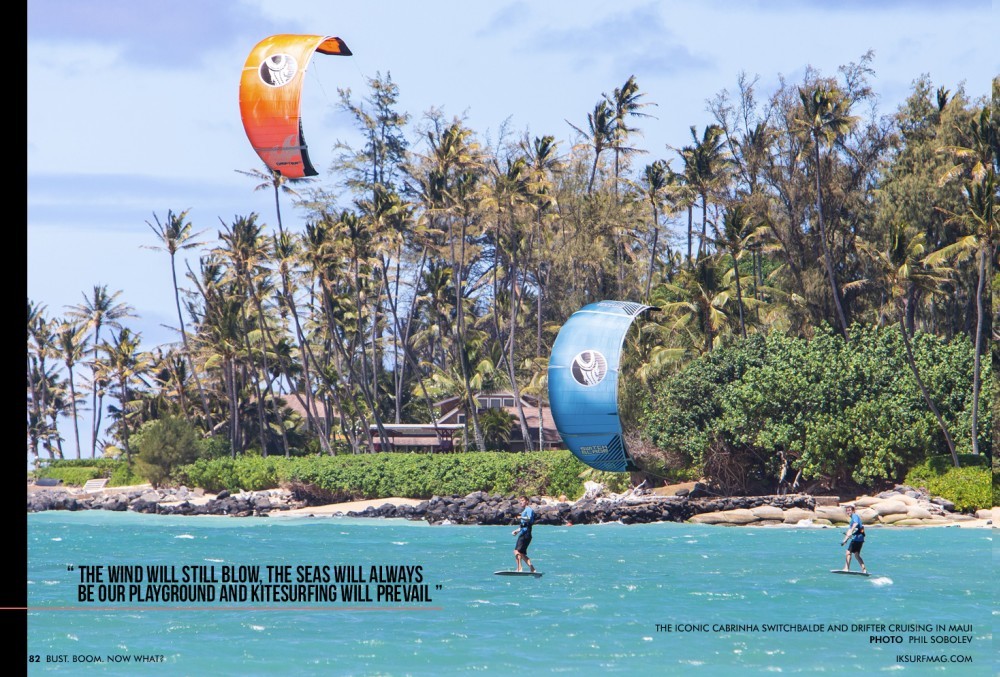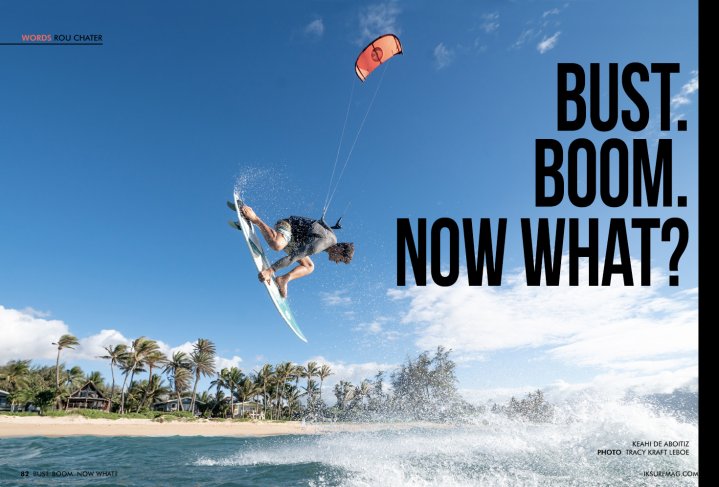
Bust, Boom, Now What?
Issue 82 / Wed 12th Aug, 2020
COVID hit, and the industry went into panic mode, but then lockdown was eased, and sales went through the roof, “the best two months in the industry”, was a phrase we heard a lot, but what comes next? Rou Chater investigates, click here to check it out!
At the end of March this year, the unthinkable happened, a global pandemic swept across the world and flipped it on its head. There was a moment when many kite businesses were staring at the prospect of going out of business. Lockdowns across the world saw global kite sales plummet, and the entire sport looked on the brink.
It provided a unique opportunity and moment in time for the industry to perhaps change and adjust for the better. It was short-lived, however, while March and April will be remembered as the worst sales figures for the industry since its inception, May, June and July are a totally different story.
Did COVID-19 save the sport or spoil it?
I walked into my local kite shop a couple of weeks ago, a place I grew up with, ever since I started windsurfing at the age of seven; I was always itching for my dad to take me there. Whitstable Windsurfing, as it was known back then, will be familiar to some of you, I am sure. Now called Boardworx, it is where I used to get all my windsurfing gear, and when kiting showed up, it wasn't long before they had my card details on file, and I was running up a hefty tab.
What can I say, kitesurfing was just as addictive as a sport back in 2001 as it is now. Anyway, my most recent visit left me concerned, there was the now-familiar social distancing routine in place, but worse than that it looked like the shop had been robbed.
When I say robbed, there was hardly any stock anywhere, shelves were bare and in all my years frequenting the store I had never seen anything like it. Chatting to my good friend, Mark, it seemed that during the lockdown the shop trickled along selling online, but once lockdown lifted the sales went mental, and now they had an issue of not being able to get any stock to sell.
Had we just come out the other side of a global pandemic and economic downturn the likes of which we may never see again? Or was this Christmas come at early for the industry? Chatting to brands across the board, and shops around the world, it's a similar tale.
With the amount of free time afforded with furlough schemes, and helicopter money flying around, it seems like the industry we know it has been saved, at least in the short term…
The Coronavirus provided a unique series of problems for the industry, from brands sitting on stock they couldn't sell, to shops cancelling pre-orders, even brands who manufacture to order having to support 800 staff who were sitting idle. Other brands had stock on order and couldn't get it, shops were forced to close by governments and beaches were locked down. However, when the beaches opened, so did the floodgates for equipment sales. You couldn't have asked for a better outcome really, arguably a year’s worth of business was done by some brands and shops in two months. While March and April were dead, the last few months have posted sales records unlikely to ever be met again.
It begs the question if this is sustainable. For Mark, at Boardworx, his new issue is not having enough product to sell, as it's all sold out. He has plenty of customers after equipment, but physically there just isn't any gear around for him to sell. That means the brands providing the gear have order books as long as their arm, but they can't deliver.
The issue here is the way the kite industry works. How this problem gets solved will be a testament to the resilience of the industry itself. A simplified version of the kite industry works like this. The brands work with a factory to make gear from raw materials provided by a manufacturer. There are a lot of steps in the supply chain, and it can easily be affected at any stage. Once the brands have the gear, they sell it to the distributors, who in turn sell it to the shops, where we all go to buy it. For sure some brands skip the distros and sell direct to the shops or online, but the model is there. At the top of the chain is the materials manufacturer, in our sport that is dominated by a company called Teijin. They are known for the canopy material in your kite, they also make Dacron and other fabrics used in kite and board production.
Much like Shimano and SRAM dominate the cycling market as the two gear and brake manufacturers Teijin dominates the kite industry. With good reason, the materials they create have set a benchmark within the sport. Other companies have tried and failed in the past to use different materials with varying levels of success.
Cabrinha are arguably one of the only companies to successfully buck the Teijin trend. Working with Nike to develop their Nano RipStop Canopy material, is arguably the first time a brand has moved away from Teijin and been very successful with the results. It's one brand in a sea of many though and for now Teijin well and truly have the market in their grasp.
Generally, brands are booking materials with Teijin two years in advance. You can't just knock on their door and ask for enough material to make 10,000 kites, the raw materials simply don't exist. This is one of the reasons why starting a brand takes time, especially if you want to produce at scale. For sure, you could use inferior materials, but why take that risk. Teijin themselves have different grades of the same material. Canopy fabric in D2 which most brands use now, for instance, is graded A, B, C, D. A brand might not be so fussy and be able to get hold of lower grade materials, but they are a lower grade for a reason, and the risk is more warranty issues further down the line.
For 2020 the brands have long had their gear in production, now it's sold out, and 2021 is on the way, they can't suddenly ask for another 10,000 kites from the factory to supply the demand as the raw material just isn't there. This means for Mark at Boardworx he can't get any new stock and looks like he's been robbed.
It's not just the kite industry that is affected, try and buy a mountain bike in Europe or the US for under £2000 and you can't, they are entirely sold out in all sizes and all models. Such has been the spike in demand for sporting goods the whole world is reeling from a weird phenomenon.
In a world where you can order something online and get it the next day, we are now in a situation where certain goods have waiting lists of months, and some just can't be bought, not for any money. What does this mean for the future?
It's almost impossible to forecast an event like this, and forecasting is what dictates the industry. Sell 20,000 kites in 2019 you'll probably order 22,000 for 2020. You'd be foolish to order 10,000 or 30,000 as you'll either miss out on sales or be left with a load of stock. With an event like this, what do you do as a brand? You know you can sell your product ten times over, but is that demand going to be there next year?
In an unpredictable world, it's a tough situation to be in, especially when 2020 has thrown up more curveballs than the World Series and its only August. For you, as a kiter, you may or may not have noticed this strange phenomenon. If you haven't tried to buy any kite gear, you may be oblivious, equally that kite you wanted to buy might be out of stock and you have to make do.
What you won't have failed to notice though is the sheer number of people at the beach. It seems like when humans can do anything they want, they tend to just travel along a linear path doing the usual things that make them happy. Stop them from doing what they want for an extended period, and something changes.
People all over the world were dusting off bikes in garages, digging out windsurf gear long since forgotten and pulling those kites out of cupboards and heading to the outdoors. The beaches of the world have been rammed. Every kiter has noticed this, you can't miss it. The uptake in participation of the sport is unprecedented, a word I was trying to avoid using for this whole article and have now failed.
We're in a unique situation where more people than ever have a combination of time and money and are choosing to either revisit, learn or just spend more time participating in sports. For the industry that's a good thing, more people equals more customers, the oxymoron here is that if you don't have the equipment to sell in the first place, it's just another missed opportunity.
Will that momentum carry on for the future is the larger question? We've had the bust, then the boom, but what next? This summer in Europe and the US will be marked in history as one where people had more free time, either being paid to stay at home by the government or because they were working from home as so many of us now do. Most of us have more money flushing around too, government bailouts, helicopter cash, furlough schemes and lower expenses, after all, it's hard to spend cash when bars and restaurants are closed.
This blending of cash and time has led to the boom, but what happens when these resources run out. We're reaching the point when the free money stops flowing, the redundancies inevitably come, and the economy surely has to take a downturn.
This seismic shift in our lives has had surprising consequences, but the current status quo is unsustainable and when the money runs out what comes next? Will all these newly energised kitesurfers carry on with the sport? As winter approaches and the weather turns will that newfound enthusiasm translate into wetsuit sales as the passion continues or will the desire to hit the water wain as quickly as it exploded at the end of lockdown.
These are questions that are hard to answer and even more difficult to predict. One area where the industry is still struggling is the kitesurfing holiday business. While countries are opening up, borders are not, insurance companies are nervous and the general kite populous seems to be relishing the conditions at their home spots over hours sat on planes in search of something better.
Usually, kite travellers are a pretty resilient bunch, after the terror attacks in Egypt, it wasn't long before the kiters headed back. The promise of warm water and consistent winds and the chance of a good fix surely outweighs the minimal chance of a run-in with a terror incident.
However, this feels different, with governments putting restrictions on travel, staycations being pushed at every turn and the underlying fear of what is still a killer virus it's going to take a little more time before the travel industry gets back to any new kind of normal.
What a lot of these resorts are finding is an influx of local kiters visiting, after all a staycation is precisely that, a holiday away from home in your home country. The lagoon at Lo Stagnone in Sicily is filled with Italians, rather than the usual eclectic mix of European kitesurfers. It's the same story everywhere you look, the schools and spots where people can travel too are busy, but the mix of kiters from different countries isn't quite there yet.
There will, of course, be casualties in all of this, as well as success stories. Liquid Force Kiteboarding have ceased to be, deciding to focus on the sport of foiling and closing the offices in Hood River and dropping all the team and staff. Dakine have moved their huge office out of Hood River too, they are now running a much smaller operation out of California. We've just heard BWSURF will cease production of kites with immediate effect.
No doubt there will be more companies that follow suit, but we are also hearing of brands that were expected to struggle this year having found themselves saved by the uptick of sales. After all, if you were lucky enough to be sitting on stock, then that very quickly became a much sought after commodity.
Personally, I think this could turn out to be a missed opportunity for the industry, overnight they were forced to rethink how they operated; everyone made sweeping changes across the board. As soon as the money flowed in though it didn't take long for the creatures of habit to go back to what they know best. Whether that is for the better remains to be seen. One area that has always niggled me is the second-hand market. It's crazy you can drop £1800 on a new kite and bar and then not sell it for anything more than £500 barely a season later in the UK.
With this lack of gear and high demand, perhaps there will be an opportunity to redress that balance. Although once again I think we'll shoot ourselves in the foot. Human nature will ultimately be what decides the future for us. How we react as a populace of beings to the unfolding drama remains to be seen.
Will you keep up your renewed enthusiasm for the sport you love? Or will you let a love of something you once held so dear wain once again? If you're reading this article, you are more likely to fit into the die-hard passionate kitesurfers bracket, and I know from experience that is a hard fire to snuff out.
Perhaps the only constant in all of this is that the wind will still blow, the seas will always be our playground and kitesurfing will prevail. It's proved to be resilient in the face of the most ardent disorder, and I don't think that will ever change. History will be the ultimate judge as it always is, the only question is whether we are all around to see it…
Videos
By Rou Chater
Rou has been kiting since the sports inception and has been working as an editor and tester for magazines since 2004. He started IKSURFMAG with his brother in 2006 and has tested hundreds of different kites and travelled all over the world to kitesurf. He's a walking encyclopedia of all things kite and is just as passionate about the sport today as he was when he first started!




